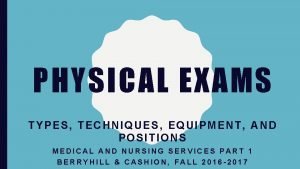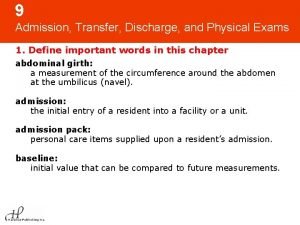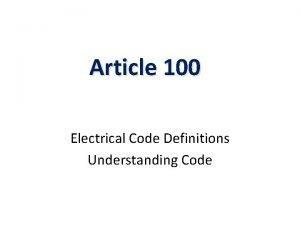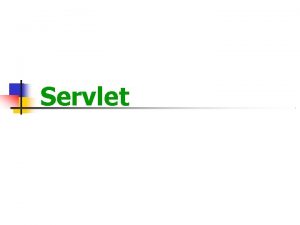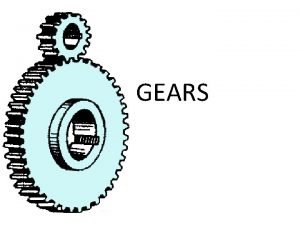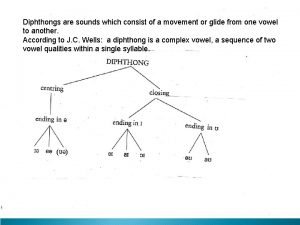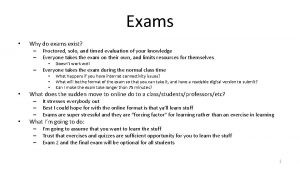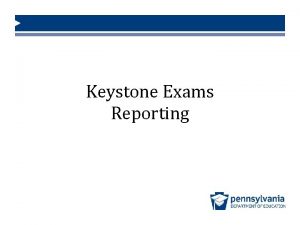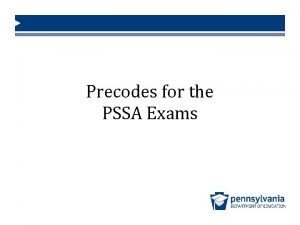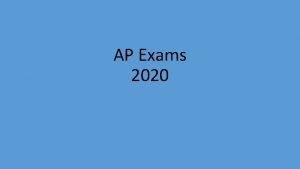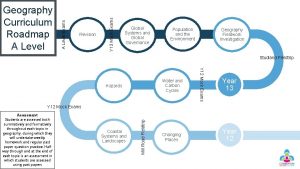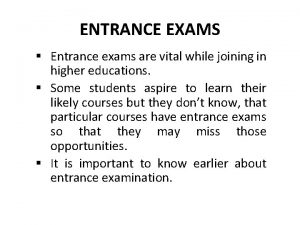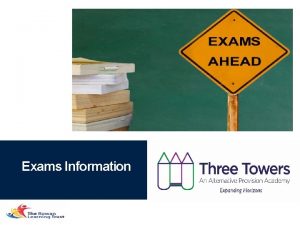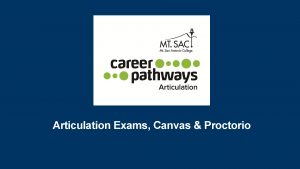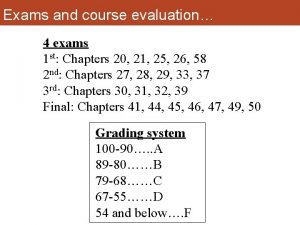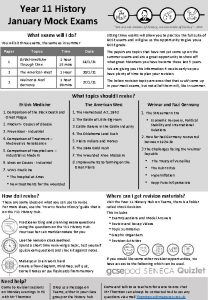Physical Exams What should a physical exam consist






















- Slides: 22

Physical Exams: What should a physical exam consist of? Brainstorm with partner in class Clinical Exams TM 1

v. Clear bright eyes with pink membranes around the eyes. v. An appearance of contentment. v. An alert attitude and interest in surroundings. v. A good appetite. v. A sleek, shiny coat with hair that is pliable, not dry and brittle. v. Feces and urine that are easily passed and normal in appearance. v. Temperature, pulse, and respiration in normal range. 2

Physical examinations are performed to assess a patient’s condition. ◦ assessment = evaluation of a condition ◦ signalment = description of the animal example of a signalment: ◦ 12 -yr-old, F/S DLH ◦ 2 -yr-old Arabian colt ◦ 4 -mo-old barrows Physical Examination Terms

Vital signs are parameters taken from the animal to assess its health. ◦ temperature febrile versus afebrile pyrexia ◦ pulse ◦ respiration ◦ blood pressure Vital Signs

Average TPR’s Cat Normal Temperature ˚F 101. 5 Pulse Beats/min. 110 -130 Respiration Breaths/min. 20 -30 Cattle 101. 0 60 -70 10 -30 Chicken 107. 0 200 -400 15 -30 Dog 102. 0 70 -120 10 -30 Goat 102. 5 40 -60 12 -20 Horse 100. 0 30 -60 8 -16 Rabbit 103. 0 123 -304 30 -45 Sheep 102. 0 60 -90 12 -20 Snake room temp 12 1 -2 5

Temperature Variations in temperature occur due to: ◦ Infection/disease ◦ Excitement/stress ◦ Environment Procedure Wipe thermometer with alcohol and shake it down until the mercury is below 98 degrees. Lubricate the tip with petroleum jelly. Gently insert thermometer into the rectum and hold it securely in place for three minutes. Remove thermometer and wipe with a paper towel. Slowly rotate thermometer until the mercury is visible, and take a reading. 6

Directions: Write the procedures for taking a TPR. Temperature Variations occur due to: • Infection/disease • Excitement/stress • Environment Procedure: 1. 2. 3. 7

The Pulse • spurt of high pressure blood that passes along the aorta and arteries when the left ventricle contracts. As the pulse of blood passes along an artery the elastic walls stretch. • When the pulse has passed the walls contract and this helps push the blood along. • The pulse is easily felt at certain places where an artery passes near the surface of the body. The pulse is strongest near the heart and becomes weaker as it travels away from the heart. The pulse disappears altogether in the capillaries. Pulse Clinical Exams TM 8

Pulse Variations may occur due to: Procedure ◦ ◦ ◦ Anxiety Exercise Pain Disease Shock species Using your index and middle fingers, gently roll them over the artery feeling for the pulse. Count the number of pulses in 15 seconds. Multiple the number of pulses in 15 seconds by 4 to get beats/minute. Clinical Exams TM 9

Dog/Cat Pulse- femoral artery Clinical Exams TM 10

Horse/Cow Pulse Clinical Exams TM 11

The normal pulse rate for an adult horse is between 22 -44 beats per minute. It can be taken at the facial artery, transverse facial artery, carotid artery, median artery, metatarsal artery, digital artery, and coccygeal artery. The character, strength and rhythm of the arterial pulse should be assessed. Clinical Exams TM 12

Directions: Write the procedures for taking a TPR Pulse Variations occur due to: • Anxiety • Exercise • Pain • Disease • Shock Procedure: 1. 2. 3. Clinical Exams TM 13

Respiration is evaluated by looking at three parameters. ◦ Rate of respiration ◦ Depth – degree of chest effort needed to take a breath (deep, shallow) ◦ Character (slow, rapid, normal) Procedure Observe the rise and fall of the chest, Count the number of breaths for 15 seconds. Multiple the number of respiration in 15 seconds by 4 to get breaths/minute. Clinical Exams TM 14

Directions: Write the procedures for taking a TPR Respiration Evaluated based on: • Rate of respiration • Depth – degree of effort needed to take a breath (deep, shallow) • Character – rapid, slow, normal Procedure: 1. 2. 3 Clinical Exams TM 15

12 Areas to Examine General Appearance - Healthy overall, eyes bright, coat shiny, too fat or too thin? Integumentary (skin)- Coat shiny/full, or dull/brittle? Bald patches, rashes, or flaking skin? Muscoskeletal - History of lameness or visible lameness? Broken bones? Circulatory - Coughing, fainting, dyspnea, or heart murmurs? Respiratory - Coughing, sneezing, nasal discharge, exercise intolerance, or cyanosis? Digestive - Eating normally? Diet changes? Toxin (rat poison, antifreeze) ingested? Vomiting or diarrhea? Genitourinary - Abnormal discharge, smell, or color ? Swelling, inability or difficulty in urinating and defecating? Nervous system - Seizures, behavior changes, head tilt, difficulty walking? Lymph nodes – Swollen? Ears - Discharge, unusual odor, or head shaking? Eyes - Excessive tearing or discharge? Visual difficulties? Mouth - Gums and teeth healthy, moist, pink mucous membranes? Very red, cyanotic, or pale membranes are abnormal. Clinical Exams TM 16

General Appearance Integumentary Healthy Coat overall, eyes bright, coat shiny, too fat or too thin? shiny/full, or dull/brittle? Bald patches, rashes, or flaking skin? Areas to examine Clinical Exams TM 17

Muscoluskeletal Cardiovascular History Coughing, of lameness or visible lameness? Broken bones? Atrophied muscles Difficulty walking Difficulty getting up from lying down fainting, dyspnea, or heart murmurs? Areas to examine Clinical Exams TM 18

Respiratory Digestive Coughing, Eating sneezing, nasal discharge, exercise intolerance, cyanosis? normally? Diet changes? Toxin (rat poison, antifreeze) ingested? Vomiting or diarrhea? Areas to examine Clinical Exams TM 19

Genitourinary Nervous System Abnormal Seizures, discharge or smell, or color ? Swelling, inability or difficulty in urinating and defecating? behavior changes, head tilt, difficulty walking? Areas to examine Clinical Exams TM 20

Ears Eyes Discharge, Excessive unusual odor, or head shaking? Scratching at ears tearing or discharge? Visual difficulties? Areas to examine Clinical Exams TM 21

Mouth Gums and teeth healthy, moist, pink mucous membranes? Very red, cyanotic, or pale membranes are abnormal. Areas to examine Clinical Exams TM 22
 Types of physical assessment
Types of physical assessment Chapter 9 admission transfer discharge and physical exams
Chapter 9 admission transfer discharge and physical exams Admission transfer discharge and physical exams
Admission transfer discharge and physical exams Is britain and uk same?
Is britain and uk same? What does britain consist of
What does britain consist of What consists of the uk
What consists of the uk Safety net drop tests must consist of a
Safety net drop tests must consist of a Continental method of emulsion
Continental method of emulsion What is blood composed of
What is blood composed of A feeder consists of all circuit conductors located ____.
A feeder consists of all circuit conductors located ____. What does britain consist of
What does britain consist of Linker and loader in system programming
Linker and loader in system programming The requestdispatcher interface consist of following method
The requestdispatcher interface consist of following method Problem analysis chart programming
Problem analysis chart programming Chorionic villus
Chorionic villus What does an ict system consist of
What does an ict system consist of Brand elements memorability
Brand elements memorability Kahoot pin
Kahoot pin Direct materials cost
Direct materials cost Gear applications
Gear applications Classification of diphthongs
Classification of diphthongs A series of events in which one organism eats another
A series of events in which one organism eats another Food web with at least 10 organisms
Food web with at least 10 organisms
